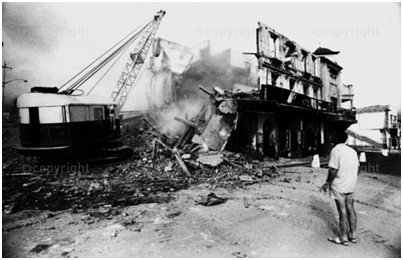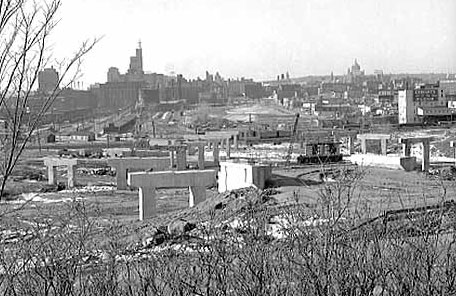Today we got a taste of what South African winter looks like - 50's and pouring all day long! So, we took the chance to learn a little bit more about the inhumanity of Apartheid at the District Six Museum.
District six is one of the neighborhoods in the heart of Cape Town. Although it is mostly just grass and open space today, it was once filled with working class people who lived as members of a vibrant, thriving community there. However, District Six became one of 42 sites in the Cape Town area in which people of color and black Africans were forced to leave their homes and relocate to government housing outside of the city. The residents of District Six were some of the 3.5 million people forced out of their homes during the Apartheid regime. The District Six museum tells the story of this devastated community.
The first official forced removal in the Cape Town area happened in 1906. Bubonic plague had traveled across the ocean through rats living in the hay brought to feed colonialist's horses. But, when people started getting sick, it was the Black Africans who were blamed. They were relocated away from the city, and all of their possessions were burned.
Just over four decades later, as the Apartheid government began its reign, legislation was passed in 1949 banning marriage between the different race groups. The basic premise behind Apartheid legislation was that people of different races were too different to possibly live together. Yet, people all over Cape Town were living in such a way that showed that this thinking simply wasn't true. The government did not want communities made up of people of different races living together, and as a result, neighborhoods and communities were relocated and demolished between the 1960's and 1980's.
The story that the District Six museum tells is poignant - through pictures and mementos, one is drawn into the living, breathing, community of the place. District Six was home to 60,000 people. It was a world where people worked, played, had babies, danced, celebrated birthdays, got married, visited the barbershop, listened to jazz! It was home - a home of friends, families, neighbors, workers, children...people. The photos all around the museum speak to the lives that once played themselves out on the streets of District Six - the streets which now lie empty and lonely.
When the community members of District Six began hearing whispers and receiving notices that they were to leave, nobody could believe it - where would everyone go? It seemed there was no way that the government could force so many people leave their homes. Yet, that's exactly what happened. People had to leave the houses in which they had raised their children, leave the neighbors they had come to share their lives with, leave their locations close to work and schools - the loss was total. As homes were packed up, bulldozers followed. By the 1980's the destruction was complete.
Some effort has been made for reconciliation around District Six. The museum is an important landmark that has collected its stories (some ex-residents have even published books or films of their stories), and has held events to try to help people heal. Yet, there is clearly still much pain in the memories of this community.
As I walked through the museum, I was reminded of the Rondo neighborhood of Saint Paul. Although the circumstances differ, I believe that there are commonalities in the injustices of these experiences. During the 1960's, Interstate 94 was constructed in Saint Paul, right through the heart of Rondo. Rondo was also a tight knit, vibrant, thriving community - made up of primarily African Americans. It was a middle class neighborhood that functioned independently of the white neighborhoods surrounding it. Families that had been a part of the community for years and years, as well as those just arriving from the South - everyone had to go. Community members who refused to sell their homes were forcibly removed, and compensated at a fraction of what their homes were worth. Construction ripped its way right through the Rondo community - and sent its community members into the segregated housing market and away from their families, friends, neighbors, and community. Some interesting (and heartbreaking) parallels...
After checking out the museum, we strolled into the Grand Parade to get a glimpse of a local market. We stood in the square where 200,000 people gathered in February of 1990 to hear Nelson Mandela speak from the balcony of City Hall after being released from Robben Island.
We also got caught in a crazy downpour which left us soaked and shivering!!! But, nothing that a good cup of rooibos tea can't fix!
Another great day - lots to think about, lots to reflect on, lots to remember as consider how injustice can have longstanding impacts on communities. It's heavy, but so significant. As I have often heard spoken of here, if we don't understand our history, how can we move forward? I continue to be incredibly thankful for the opportunity I have to understand South Africa's history and the ways it will help me move forward in my own work.
More to come!
~emily~







No comments:
Post a Comment